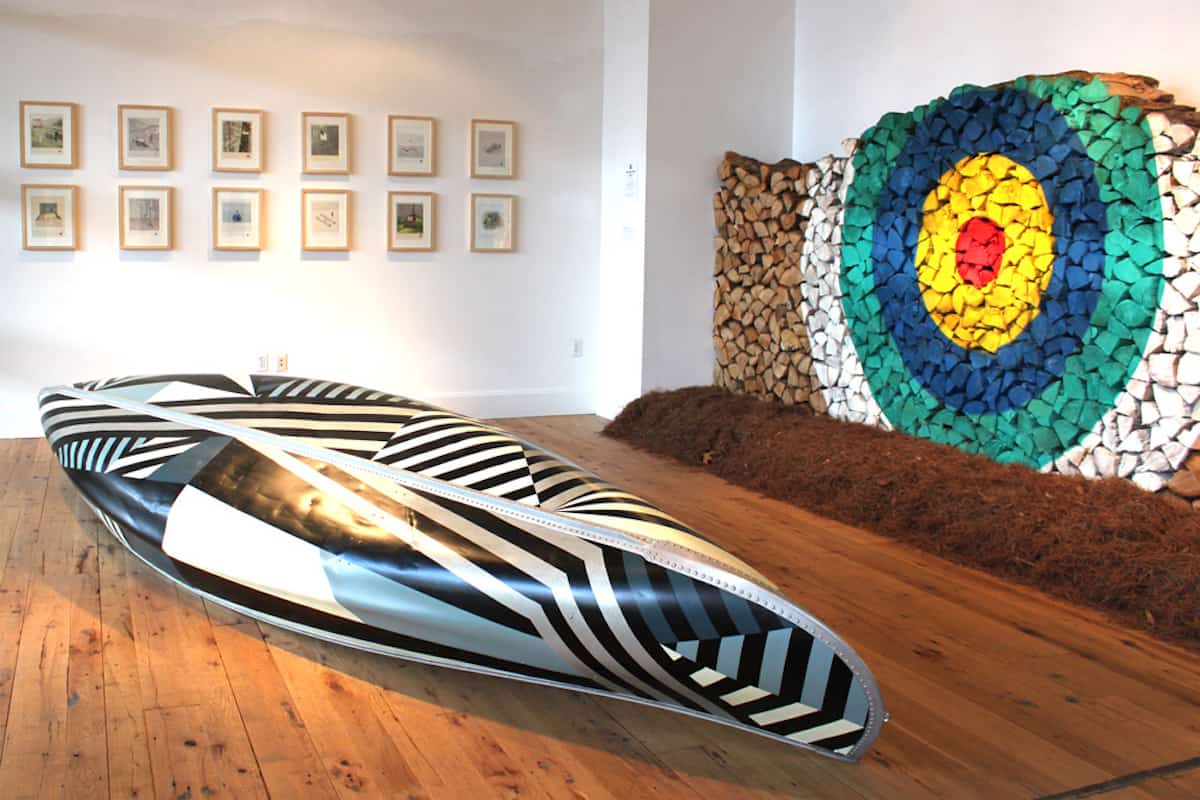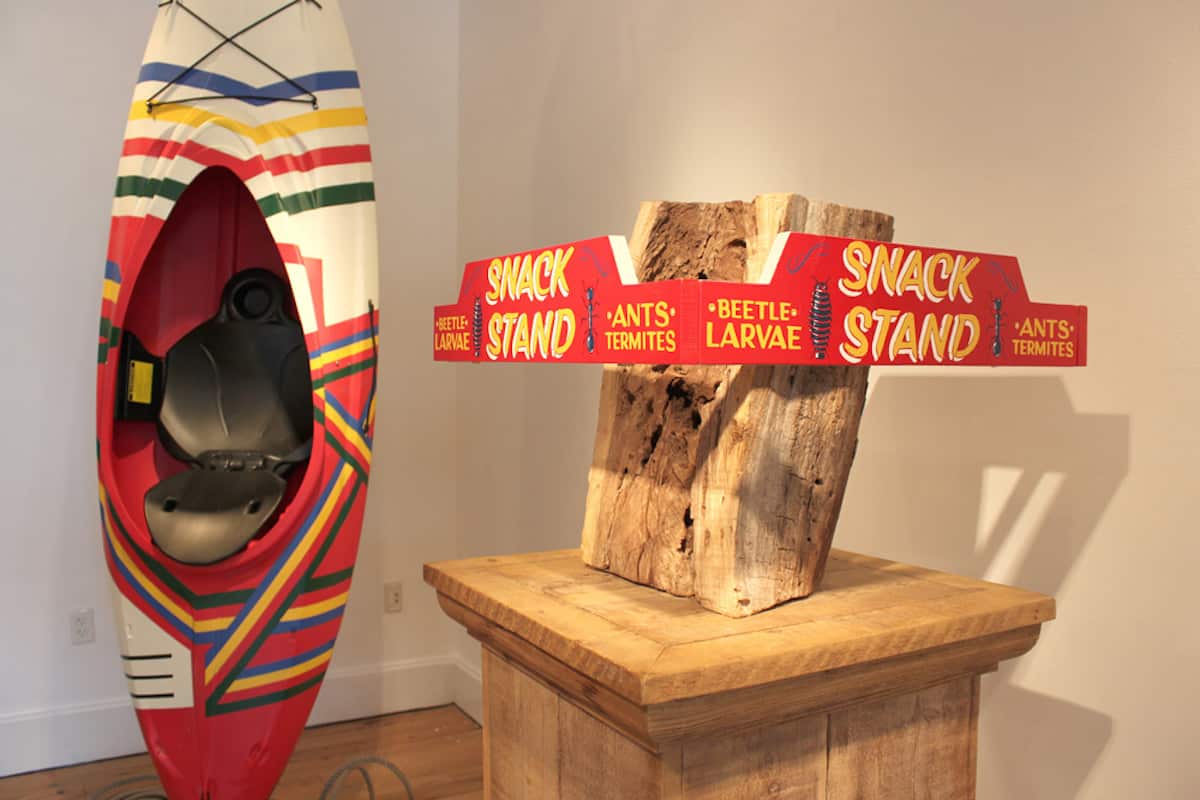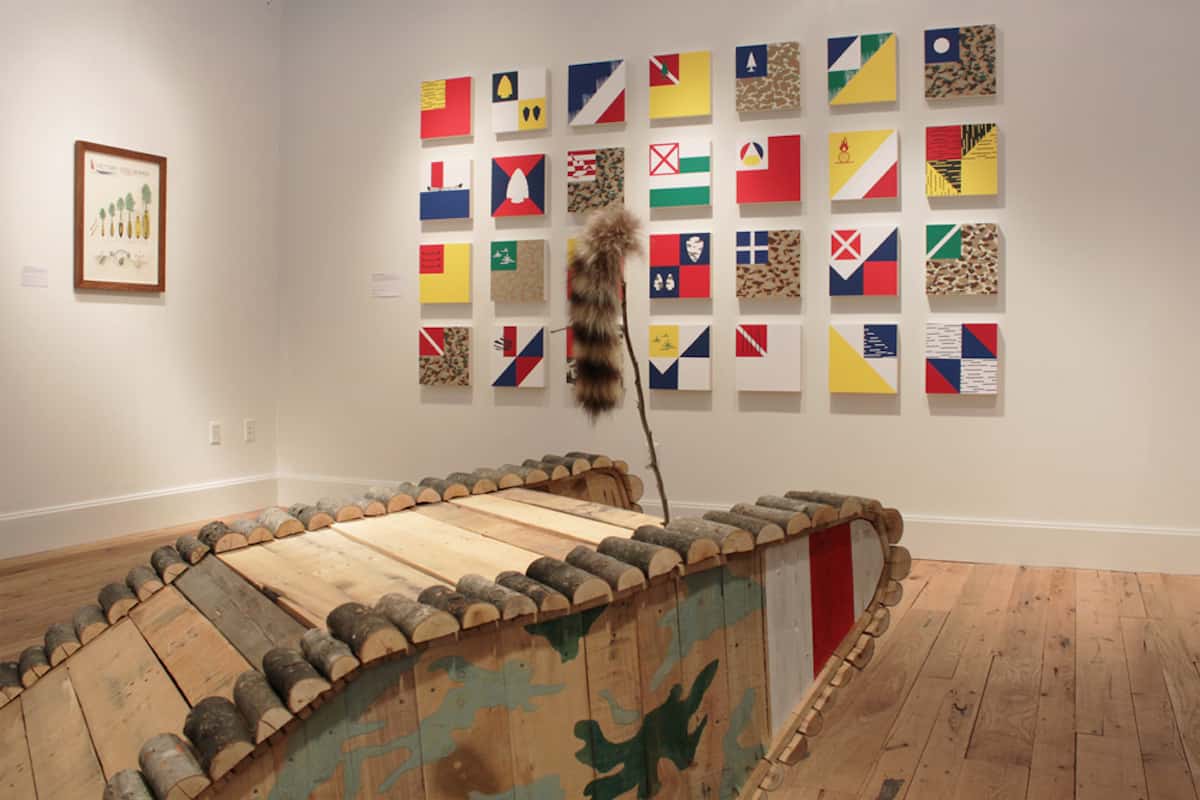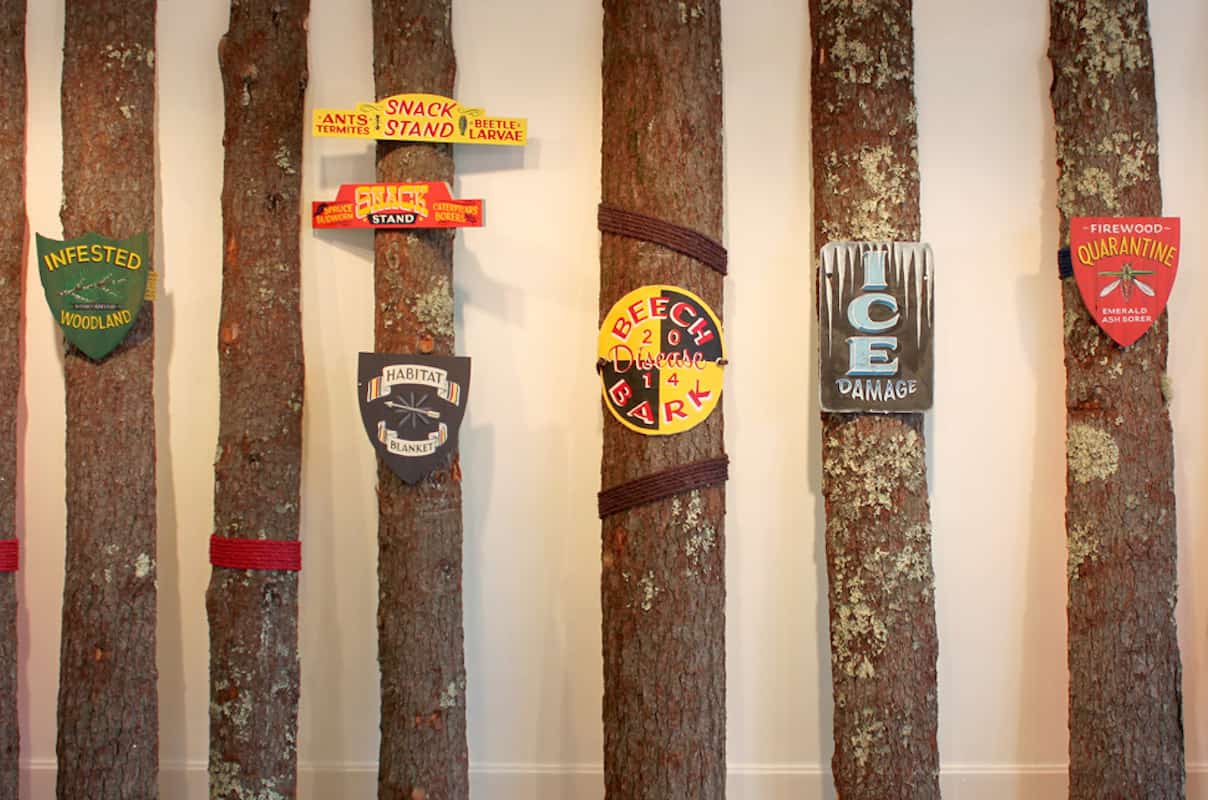David Buckley Borden’s ecological art brings the urgency of environmental stewardship in fascinating new way.
The far corner of a working waterfront surrounded by parking lots, construction cranes, and a highway interchange is an unlikely setting for a pop-up exhibition celebrating art, design, and ecology. But that’s exactly what you’ll find in a former naval storage facility in Boston.

SS Razzle Transport Canoe and Hibernaculum Target No. 2 | Photo courtesy of Trifecta Editions
An immersive art experience for visitors — something like Wes Anderson-meets-the Boy Scout Handbook — Hibernaculum includes a full-sized wood pile, slate signage, laser-cut barn vent, fashion cabin, and selfie stick. David Buckley Borden, a multidisciplinary artist and landscape architect who highlights natural history and ecological issues in his work, created the exhibition in the Innovation and Design Building.
Hibernaculum — the winter refuge for animals who hibernate — stems from his experience at a free-form artist retreat in Ticonderoga, New York hosted by Boston-based print collective Trifecta Editions. “I loved just being at Eagle Lake. Free from emails, iPhones, and other distractions is like a big vacuum, and you just fill the void with new ideas,” Borden says. “Spending a good deal of time in the Adirondacks made me appreciate the nuances of the place, and helped me be more creative in communicating the environmental issues that threaten it.”

SS Dazzle Scout Kayak and Snack Stand | Photo courtesy of Trifecta Editions
Borden calls this work “tactical ruralism,” which he describes as discrete, creative interventions that make small but meaningful changes to the rural environment. It’s important to make art and design accessible, he says, “to help folks have a deeper appreciation for their local ecosystem and develop a greater sense of environmental stewardship.”
Like much of Borden’s work, Hibernaculum is a collaboration between Borden and creatives ranging from painters and interior designers to graffiti artists. He reached out to Boston’s art and design community, including painter Cyrille Conan for large-scale geometric painting, lettering artist John Cronan for classically-styled signage, and fablab guru Jared Laucks for architectural fabrication, among others.

Invasive Species Pallet Transport Tank and Forest Flag Print Series | Photo courtesy of Trifecta Editions
At the forefront of the installation are “Snack Stand” and “Woodland Wall,” which consist of bright and colorful silkscreened signs surrounding insect-sculpted logs, some reaching 7 feet high. In another room, “Invasive Species Pallet Transport Tank” is just that — a small wood tank that highlights the North American import of invasive insects via shipping materials from Asia and Eastern Europe. “Barn Vent” is central in the space. Borden calls it a “romantic tribute to the harmonious relationship between man and nature.” These and other works in the exhibition bring the urgency of environmental stewardship to new audiences in an engaging, digestible format.
Hibernaculum also includes public programming with organizations ranging from small local studios to eastern Massachusetts’ Boston Society of Architects. Meet the Makers Night, Design Field Day, and Art Jam are just a few of the activities built into the show.







